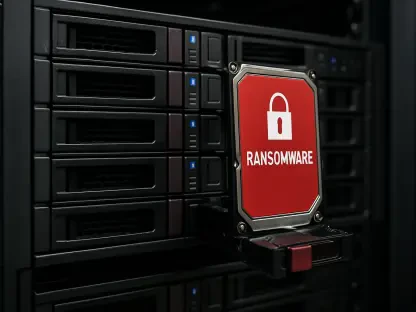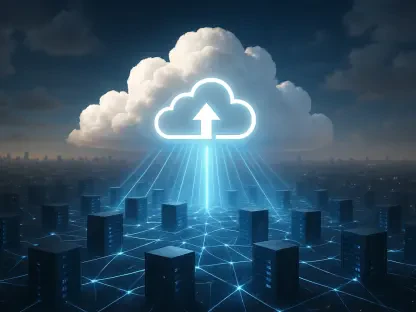The tenant billing software market is embracing a significant evolution driven by technological innovations and an increasing necessity for more efficient property management solutions. From manual processes to tech-savvy methodologies, this industry is poised for substantial growth from 2025 to 2033, reflecting an ongoing shift in how property managers handle billing and tenant services. This transformation is largely attributed to advancements in cloud computing technologies and a growing demand from both residential and commercial complexes. The market is experiencing an upward trajectory, with a valuation of $418.11 million as of 2024, and it is expected to maintain a strong Compound Annual Growth Rate (CAGR), highlighting the importance of digital solutions in addressing the challenges faced by the real estate sector.
Market Overview and Current Valuation
The tenant billing software industry is experiencing rapid expansion, fueled by advances in cloud computing and increasing demands from commercial and residential property sectors. As of 2024, the market is valued at USD 418.11 million, with strong projections for ongoing growth thanks to a robust CAGR. This trajectory is driven by technology that supports more efficient management of property leases, utilities, and due services. The shift ensures streamlined processes that transform the previously fragmented and inefficient systems characterizing traditional property management. Solutions like tenant billing software offer property managers and landlords the ability to automate vast aspects of their business, thus enhancing operational efficiency. This not only reduces costs but also improves tenant satisfaction. As property management continues to evolve, the appeal and necessity for advanced software only grow stronger, pushing the market forward.
Such growth is further encouraged by the economic advantages of adopting automated systems, which present fewer errors and more reliable and up-to-date financial records. These systems allow for quicker execution of tasks and improved accuracy, promoting a smooth and hassle-free tenant experience. As digital solutions continue to rise to prominence, their ability to provide a seamless interface for both tenants and landlords captures widespread attention. It leads to increased adoption, underscoring the ongoing need for technology-driven approaches in property sectors worldwide. The modernization it brings to property management not only alleviates the burden on managers but also satisfies the growing expectations of tenants for a more engaged and responsive billing system.
Drivers of Growth in Tenant Billing
The expansion of the tenant billing software market is heavily influenced by urbanization and digital transformation within the real estate sector. As cities around the world undergo rapid growth, there is a mounting demand for optimized property management solutions that enhance tenant satisfaction. Urbanization leads to more complex real estate ecosystems, where managing multiple leases and utilities manually becomes increasingly untenable. Technology offers an answer, presenting sophisticated solutions that keep up with the dynamic needs of modern urban living. This demand correlates with the rise in urban centers seen globally, forcing companies to adopt software that can streamline the extensive demands of complex properties efficiently. Digital transformation emerges as a natural progression, where developers and property managers alike realize the importance of incorporating technology to stay competitive and meet tenant expectations.
Furthermore, cloud-based platforms such as Software as a Service (SaaS) have immensely contributed to the market’s growth by providing scalability and real-time data processing capabilities. Such models allow property managers to address the dynamic requirements of contemporary property management effectively. The technology shifts routine processes into integrated systems capable of handling large volumes of data effectively and securely. By enabling real-time monitoring and instant access to information, SaaS platforms streamline operations and offer insights that empower property managers to make informed decisions promptly. This substantially influences the way routine operations are handled and sets the foundation for continued technological advancements in tenant billing processes.
Technological Integration
The integration of Artificial Intelligence (AI) and Machine Learning into tenant billing software represents a profound trend, revolutionizing how property managers handle billing processes. By utilizing these technologies, organizations gain the capability to forecast utility costs, detect anomalies, and transform billing into proactive resource management strategies. AI models analyze historical data to predict future expenses, allowing property managers to budget more accurately and detect potential issues like unusual consumption or leaks before they become costly problems. Platforms such as Gridium exemplify the role AI plays in shaping billing efficiency, transitioning from just a passive accounting task to an interactive element that contributes to overall building intelligence and elevates tenant engagement. This not only optimizes the resources but also represents a shift towards a more strategic approach to property management, where data-driven insights lead operations.
AI’s integration extends beyond simple data analysis, promoting smarter use of resources through advanced algorithms that adapt and learn. Machine Learning models observe usage patterns, making adjustments to billing models that are more accurate and dependable. This technology not only improves the efficiency of billing practices but also enhances the caliber of service offered to tenants. By proactively addressing issues and optimizing resources, AI-driven platforms ensure that tenants experience a higher level of service quality and engagement—elements that promote satisfaction and encourage positive tenant behaviors, such as prompt payment and higher lease renewal rates. As the reliance on these systems grows, the market continues to trend upwards, indicating a strong future for technologically integrated solutions in property management.
Deployment and Application Insights
The tenant billing software market divides primarily into two deployment methods: cloud-based and on-premises solutions, with cloud-based platforms holding a dominant position. Cloud solutions boast economic efficiency, scalability, and flexibility—qualities that appeal to property managers looking for cost-effective methods to enhance operational capabilities and market responsiveness. Unlike traditional on-premises systems, which demand significant upfront investments and ongoing maintenance costs, cloud-based platforms reduce these financial burdens by providing a service model that scales according to need and usage. This economic viability, combined with their ability to integrate seamlessly with other property management systems, makes cloud-based solutions increasingly attractive in dynamic and volatile real estate markets.
In terms of application, the market spans residential and commercial sectors, with residential applications claiming a majority of the market share. This dominance results from the complex billing requirements associated with multi-unit residential properties, which expose the inefficiencies in older utility and rent billing systems. As urbanization continues, more individuals prefer leasing over buying, prompting a growing demand for software capable of simplifying routine payments and maintenance fee collection processes. Such efficiency gains not only alleviate the administrative burden but also promote tenant retention and satisfaction. Through this lens, it becomes apparent how cloud-based and residential applications drive the expansion and adoption of tenant billing software, underscoring the market’s evolution towards greater integration and innovation.
Regional Market Leadership
Geographically, the North American region leads the tenant billing software market, a trend expected to continue throughout the foreseeable future. This leadership is propelled by a confluence of factors, including a high degree of technological orientation, a mature real estate market, and stringent regulatory frameworks emphasizing transparency and accountability in property management. The United States, in particular, serves as a driving force behind this regional hegemony due to strong proptech investments and wide-scale adoption of smart building technologies. Rapid digital transformation across this region not only contributes to market dominance but also sets a standard that other regions aspire to emulate, ensuring North America’s enduring influence on the global tenant billing landscape.
The factors contributing to the North American market’s success are mirrored in its adherence to technological advancements and efficiency improvement goals. From regulatory frameworks to innovation-friendly environments, North America’s ecosystem encourages the use and development of sophisticated software solutions capable of meeting the complex demands of modern property management. This competitive advantage empowers local companies to define and lead trends, setting benchmarks in technological innovation that influence global practices. Such dominance is unlikely to wane as international markets continue to look towards North America for industry best practices and guidance on advanced tenant billing solutions.
Innovations and Recent Developments
Recent advancements in the tenant billing software market underscore the pivotal role technology plays in enhancing property management. Innovations emerge continually as companies strive to provide cutting-edge solutions that streamline operations and optimize management tasks. For instance, AppFolio’s introduction of the Generative AI platform demonstrates significant strides in automating tasks, improving efficiency through features such as automated vendor communications and comprehensive reporting capabilities. Such innovations highlight the necessity of adopting technology that not only simplifies day-to-day activities but also provides users with insightful data to inform strategic decisions.
Similarly, RealPage’s recent enhancements to its revenue management software emphasize the industry’s adaptability to regulatory changes, ensuring compliance while maintaining effectiveness amidst evolving legal frameworks. Such adaptability underscores the importance of continuous development in staying relevant and competitive within the tenant billing landscape. Embracing these advancements allows companies to not only meet legal obligations but also maintain their edge over competitors by constantly improving offerings in response to market needs. In this ever-evolving field, the capacity to innovate and adapt remains crucial for companies aiming to expand their market presence and influence.
Competitive Landscape
Intense competition characterizes the tenant billing software market as both established global and regional players vie for dominance. Key industry figures such as Yardi Systems, Inc., and Accuenergy Inc., among others, use strategic partnerships, product launches, and mergers as growth strategies to enhance their market presence and broaden their reach. These actions allow companies to effectively capitalize on the rising demand for efficient and innovative tenant billing solutions, propelling them to the forefront of the industry. Establishing a strong competitive position requires not only meeting current market demands but also anticipating future needs and investing in technologies that preemptively address potential issues.
This competitive environment drives continuous innovation and enhances the quality of software, benefiting both property managers and tenants alike. As companies look to distinguish themselves, their efforts result in advanced solutions that streamline processes, reduce costs, and improve user experience. The aggressive nature of the market fuels further progress, ensuring that tenant billing software remains at the cutting edge, and meets the evolving needs of this dynamic industry. By maintaining focus on technological advancement and customer satisfaction, these companies continue to shape the future of tenant billing, ensuring growth and sustainability across the property management landscape.
Future Implications and Opportunities
The tenant billing software industry is expanding rapidly, driven by advancements in cloud computing and growing needs from both commercial and residential property sectors. By 2024, this market is valued at USD 418.11 million, with strong prospects for continued growth due to a robust compound annual growth rate (CAGR). This upward trend is supported by technologies that enhance the management of property leases, utilities, and services, turning former fragmented systems into efficient, streamlined processes. Tenant billing software facilitates automation for property managers and landlords, boosting operational efficiency, reducing costs, and improving tenant satisfaction.
The economic benefits of automating these systems play a significant role in this growth, as they lead to fewer errors and more reliable, up-to-date financial records. These systems allow quicker task execution and greater accuracy, ensuring a smooth, hassle-free experience for tenants. As digital solutions become more prominent, their seamless interfaces capture widespread attention among both tenants and landlords, leading to increased adoption across the property sector. The modernization brought forth by these systems not only eases the workload for managers but also meets tenants’ rising expectations for an engaging and responsive billing experience. Thus, technology-driven approaches continue to transform the global property industry.









